Over-ear. In-Ear. On-ear. Earbuds. Earphones. All the different headphone types can get confusing pretty fast.
Knowing all the types of headphones can be an uphill climb. What’s the difference between on-ear and over-ear headphones? Which are the best headphones types? And how do you differentiate between a headset and a headphone?
Quick Tip: If the headphone you are looking at has a microphone you can speak into, that’s a headset.
Whether you’re just looking to amplify your headphone knowledge or you’re out and about shopping for headphones, this detailed guide to different types of headphones will help.
There are four main types of headphones. Different headphone brands have over the years branched out and created hybrid cans, but the four categories remain.
We’re breaking down this guide into four parts.
- Part 1: Types of headphones by size
- Part 2: Closed-back vs. open-back headphones
- Part 3: Wireless headphones
- Part 4: Noise-cancelling headphones
Let’s dive in, shall we?
Part 1: Types of Headphones by Size
This is the easiest way to identify, distinguish, and pick out a pair of audio cans. All headphones are divided into three types:
| Full-size headphones | Full-size headphones have big parts. From the headband, to the speakers, to the cups, everything is big. Over-ear headphones are a good example of full-size headphones. |
| Medium-size headphones | For audiophiles that prefer more compact headphones without losing the sound quality that larger headphones have to offer, on-ear headphones are the way to go. |
| Small-size headphones | Those who don’t like mammoth cans can choose from 2 small-size headphones: in-ear headphones and earbuds. |
1. What are Over-Ear Headphones?
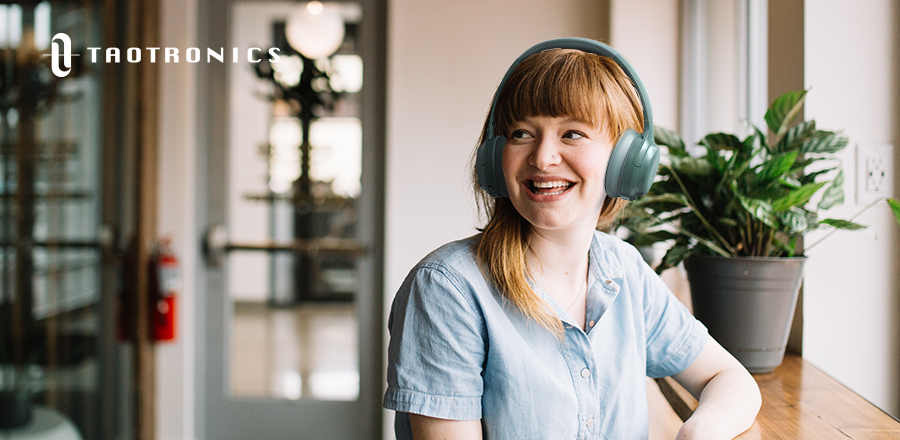
Also known as: full-size headphones, earcup headphones, or circumoral headphones.
They are designed to entirely “cup” each of your ears. Their headbands are large enough to bridge over your head—from one ear to the other—and press against the sides of your head.
Their full-size design means they can accommodate larger, higher-spec speakers. They usually have adjustable headbands and you can easily adjust the fit. Their goal is to ensure their well-cushioned cups seal around each ear.
By snugly enclosing the entire ear, over-ear cans offer the most immersive, distraction-free audio experience possible.
Pros:
- Their larger speaker drivers cover a broader sound spectrum, and the bass is good.
- Enclosing the ears completely helps seal out ambient noise, creating a more immersive listening experience (passive noise-canceling).
- The headphones are usually well-cushioned and comfortable to wear for extended periods.
- Depending on the brand, you may be able to swap worn out parts with new ones.
- There is no pressure on the earlobes because they don’t sit on top of them.
- They come with different features: wired/wireless, open-back/closed-back, a folding design, high-end cushions, adjustable headbands, and more.
Cons:
- They are bulky for some people
- Some types (closed-back headphones) tend to warm the air that’s tightly sealed in and can feel uncomfortable to wear for extended periods.
- They don’t work well with some glasses, earrings, and hairstyles.
Over-ear headphones are most ideal for: In-home use, noisy outdoor areas such as airports, crowded cafes, and train stations. They are also used in studios and gaming.
Safety Tip: Avoid wearing over-ear headphones when driving, biking, or crossing roads.
2. What Are On-Ear Headphones?
Also known as: Semi-open headphones. Earpad headphones. Supra-aural headphones.
These headphones largely resemble over-ear cans except for the fact that they offer smaller, lighter, and more commuter-friendly components.
Their most distinguishing factor is that their cups are designed to sit directly on your earlobes—not seal them as over-ear cans do.
Depending on how well the cups cushion your ears, the headphones may allow ambient sounds to leak in and audio to leak out, hence the term “semi-open”.
Pros:
- They can accommodate larger drivers for optimal sound output without sacrificing portability.
- They are ideal for those who want to hear what’s going on around them, for instance, people who exercise outdoors.
- They are easy to wear and designed to rest tightly on the outer ears.
- When well-cushioned, they feel comfortable even when worn for extended periods.
- Can be worn with some glasses, earrings, and hairstyles.
- They are less likely to heat up your ears because their semi-open design ventilates them.
- They may have adjustable headbands, comfortable cushions, and detachable cords. They can be wired/wirelss, open-back/closed-back, and foldable.
Cons:
- They can apply force on your earlobes and cause discomfort—especially if the cushioning is low-quality.
- The sound leaking in and out can muffle the playing audio and make it less enjoyable.
- The leaking audio can disturb those around you, for example, when you listen to an audiobook or podcast in a packed library or next to a sleeping partner.
- They offer less powerful bass than over-ear headphones.
In-ear headphones are used in these places: office settings, gaming, and at the gym. They offer a decent bass response coupled with greater portability.
3. What are In-ear Headphones?
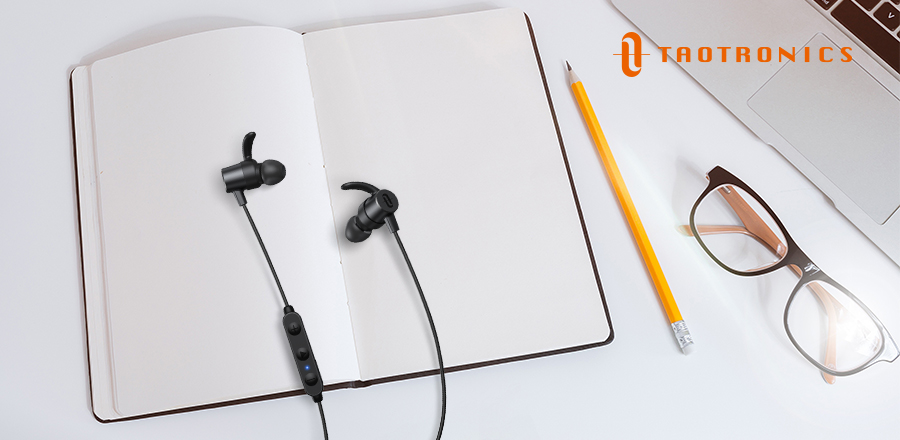
Also known as: Earbuds. Earphones.
Remember the earpieces that came with your smartphone? Some audiophiles refer to those as earphones or in-ear headphones while ascribing the term earbuds to the classic earpieces popularized by the Sony Walkman.
While both offer slightly different designs—modern earphones slide into the ear canal while classic earbuds sit at the base of the outer ear—they are both in-ear headphones.
Pros:
- They are lightweight hence portable.
- High-quality ones offer better audio.
- Modern in-ear headphones have fin-like designs, ear tips, and around-the-neck accessories for a good fit.
- They are wearable with most glasses, earrings, and hairstyles.
- The wired design helps ramp up the sound quality.
- They usually come with in-line volume rockers, track-jump function, and call-picking microphones for added convenience.
Cons:
- Their tiny drivers may not produce good audio compared to over-ear and on-ear headphone drivers.
- Poor sound isolation, a problem with low-end earpieces, can affect the listening experience.
- They can feel uncomfortable when worn for a long period.
- With wired ones, there’s always the likelihood of tangled wires.
- Low-quality earbuds/earphones may cause hearing damage.
In-ear headphones are used in these places: airplanes, sports, the gym, offices, and for casual listening.
Part 2: Closed-Back Headphones vs. Open-Back Headphones
Whichever type of headphones you pick, they can either be open-back or closed-back.
Here’s what that means and why it matters.
What are closed-back headphones?
Let’s pick two TaoTronics headphones for illustration: the TaoTronics SoundSurge 60 and the TaoTronics SoundSurge 46.
Check them out:
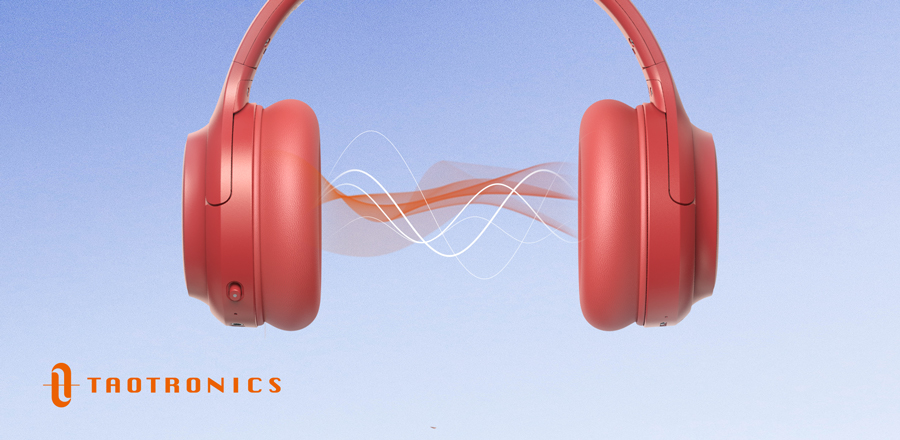
Notice the TaoTronics SoundSurge 60 Headphones’ earcups?
Now check out the earcups of the TaoTronics SoundSurge 46.
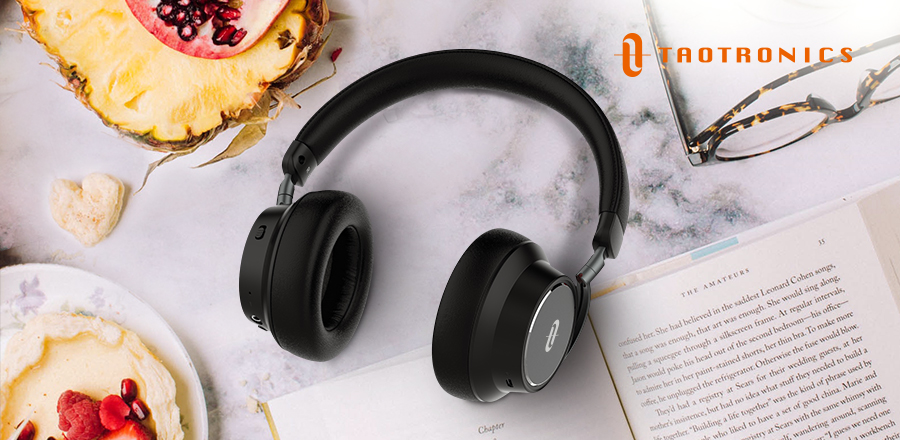
These are closed-back headphones. Closed-back headphones have enclosed earcups. The sealed earcups are designed to block out ambient noises and isolate playing audio. The desired result is to reduce the effect of environmental noise and prevent audio leakage so the wearer can experience immersive sound.
This is known as passive noise-canceling.
How well a pair of headphones can do that depends on its components and design. Many over-ear models feature a closed-back design to ramp up the noise-canceling effect.
Pros:
- Closed-back headphones provide better sound isolation so the listener can make out, pronunciations or lyrics in songs, audiobooks, or podcasts.
- They reduce ambient noise that may muffle the playing audio.
- They are ideal for use in crowded, noisy places.
Cons:
- With nowhere to escape, sound waves can warm the air sealed in between the cups and your ears and create uncomfortable heat.
- You can’t use them when you need to hear external sounds, like when you’re exercising outdoors or you’re in the office.
Applications: Home entertainment, studios, medium gaming, and when listening to audio files outdoors.
What are open-back headphones?
With open-back headphones, you can see right through to the speakers on the back side (the logo side) of the earcups.
The earcups are designed in that way to provide ventilation to the speakers and to let ambient sound in. The goal is to balance out the audio playing with the surrounding sounds.
Pros:
- When the audio playing and the ambient noise are balanced, it makes for a natural listening experience.
- You are aware of the ambient sounds.
- Since the headphones have good ventilation, they keep your ears cool and you can listen to audio files for a long time.
Cons:
- Ambient noises can muffle the sound quality.
- They are not suitable for crowded spaces where ambient noise is high.
- Bleed noise may disturb other people.
Applications: Heavy gaming and outdoor activities that require the wearer to be aware of their surroundings (e.g. jogging)
Is the Best Closed-Back Headphone the Taotronics Soundsurge 60?

If you want high-quality, over-ear headphones that offer an immersive sound experience both indoors and on the fly, it’s the SoundSurge 60. They have a foldable, rotatable design and a lightweight frame (7.7 ounces) that makes them ultra-portable.
Their 40mm large-aperture drivers and active-noise cancellation ensure you don’t have to sacrifice sound clarity for booming bass. The battery offers 30 hours of playback per charge and can last—charge it for 5 minutes and enjoy 2 hours of playback.
TaoTronics made the headphones detachable, so you can use both wireless and wired features. Few over-ear headphones offer both.
Part 3: Wireless Headphones
Also known as: Transmitter headphones.
More and more smartphone makers are ditching the 3.5mm audio jack. This means that audiophiles will soon have no option but to find the best wireless headphones. Wireless headphones have come of age and now offer excellent sound similar to that offered by high-quality wired headphones.
These types of headphones transmit audio signals from a source device through the air—using file compression technology—into a receiver inside them. The encrypted sound data is converted into the audible sound your ear can hear by the driver unit.
There are three types of wireless headphones:
1. Bluetooth Headphones

Bluetooth is the most popular format for transmitting wireless audio. A low-bandwidth data transfer technology, it uses file compression to boost transfer speeds over short distances and to save storage space.
But the compression action can cause audio quality degradation. The best Bluetooth headphones use AptX and AptX HD codecs to maintain audio fidelity.
Other headphones come with Bluetooth Advanced Audio Distribution Profile (AADP), a technology that supports optional codecs to curb further alterations to compressed audio.
2. Infrared Headphones
Infrared technology is optical and needs a clear line of sight between the transmitter and headphones to transfer sound—much like how a TV remote works.
Infrared headphones are also ideal if you’re driving and your passengers wish to listen to your car’s headrest DVD players. Just be sure to buy headphones with a frequency range that’s compatible with the headrest players.
3. Radio-Frequency Headphones
Like Bluetooth headphones, RF headphones use signals to transfer sound—except RF signals are frequent modulation and not digital. This feature allows RF headphones and transmitter frequencies to connect seamlessly over long distances.
So, if you wish to listen to your Hi-Fi system while out mowing the lawn, on the driveway, or just farther away from the source device, get RF headphones.
What Are the Pros and Cons of Wireless Headphones?
Pros:
- No wires means no tangling.
- They are highly portable.
- They can stream audio from 33 feet away and beyond (some).
- Many come with travel cases for easy storage.
Cons:
- They are costlier than wired headphones with similar specifications.
- Audio compression can stifle the original sound quality.
- It’s easy to lose parts without a case.
- The playback time depends on the battery size.
Applications: Can be used both indoors and outdoors.
Part 4: Noise-Cancelling Headphones
1. Passive Noise-Cancelling Headphones
These headphones cancel ambient noises merely with their design and components. They form a seal around the ears and block out the noise. Passive noise-cancelling headphones can only cancel frequencies above 1 kHz.
2. Active Noise-Cancelling Headphones
Active noise-cancelling headphones have tiny microphones that detect ambient noise. When they detect the noise popping into the ear, the headphones create anti-noise that’s mixed with audio playback. These sound waves cancel the ambient noise entering the ear. However, they don’t affect the playing audio.
You don’t have to increase the audio volume to overpower the external noises. But the sound waves are incapable of muffling loud sounds. The best thing about the headphones is that you avoid ear fatigue and focus on the audio, even when in crowded, noisy places.
Pros:
- They effectively curb leakage of ambient noises.
- They help prevent ear fatigue or hearing damage.
- The 2 technologies are available in different types of headphones.
Cons:
- They are costly and may be out of reach for some people.
- Active noise-canceling technology affects battery life.
Applications: Air travel, the commute, and crowded places.
Is the Taotronics Soundsurge 46 the Best Active Noise-Cancelling Headphone?
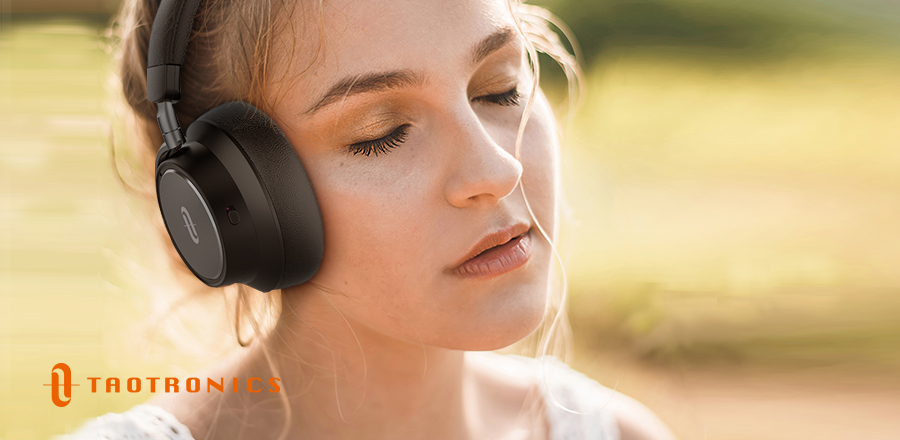
The best active noise-cancelling headphones should offer quality sound, a long battery life, and be portable. The SoundSurge 46 is lightweight, has 40mm large-aperture drivers, and offers 30 hours playback on one charge for a splendid audio experience. It even comes with a built-in mic for hands-free calls on the go.
Choose the Best Headphone Type
If you’re an audiophile looking for the best audio experience, you now know the type of headphones to get. Some headphone brands also offer hybrid headphones that combine several headphone technologies into one. So, look for the perfect combination of features and benefits you want.
If you want headphones you can use at work or sports headphones, get in-ear cans with an open-back design and passive noise-cancelling technology. Over-ear headphones offer great bass performance while on-ear headphones balance quality sound and portability.
But if you prefer to block out the world, get closed-back, over-ear headphones with active noise-cancelling technology.
Check out the TaoTronics headphone range today!
- Celebrate Labor Day: Discounts from TaoTronics - April 23, 2021
- How to Connect Bluetooth Headphones to Your Macbook Pro or iMac - April 9, 2021
- Headphone Earpads Full Guide: Replacements, Covers, and more! - March 26, 2021
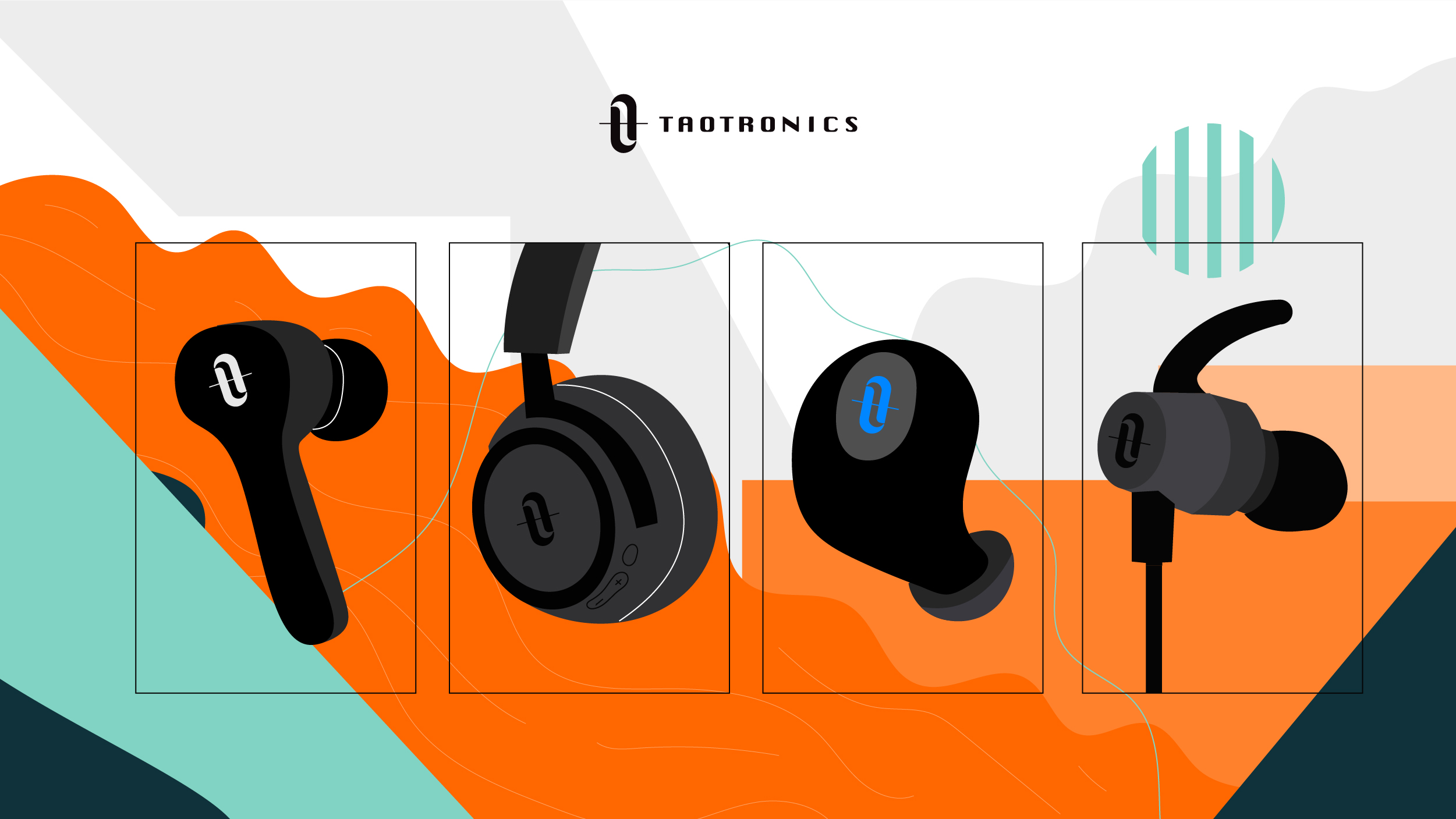
Good job on the post. Many thanks.
Good day! Do you use Twitter? I’d like to follow you if that would be ok. I’m absolutely enjoying your blog and look forward to new updates.
Hey! Yes we do have twitter – you can check it out here!
Hi – I have the BH026 in ear headphones and loved them until recently. I am currently unable to use them because they don’t seem to turn on- although the light is steady blue when charged. Can you offer troubleshooting for this issue? My review of the manual and advice on the web doesn’t seem to get at this particular issue. Thanks in advance!
Hi Angela
Please try long pressing the M button (for more than 5s) and see if the LED indicator flashes red and blue.If it does,try to pair the cellphone again on the Bluetooth pairing list. Hope this helps!